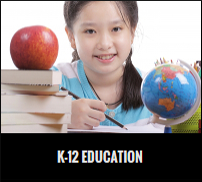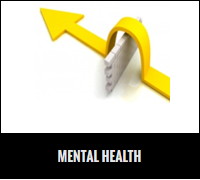1. Love Proves the Self Is Real
I became conscious of the word love at about the age of thirteen. It was, of course, in the romantic sense of the word. Since then, I’ve met thousands of people and have come across very few who have not experienced the pain of love lost, of being rejected by one whom we love.
It is common knowledge that love is wanted and needed by human beings. It is also common knowledge that love can be given and received just like a gift — a little, a lot, or not at all. Just read the books — from romance to self-help, from psychology to spirituality — as they incessantly talk about love. So, is the love that everyone talks about and writes about and believes in fact or fiction?
The sciences, including psychology, have given little attention to the fact that love 1) is wanted and needed and 2) can be given and received by all. Combining logic and experiential observation, I have discovered that what our experience indicates to be true is absolutely correct. These two facts are the foundation for a dramatic shift in our knowledge about human development, the self, and love. These new ideas have a profound impact on psychology, psychotherapy, parenting, education, relationships, and especially our views about the self and human development.
Not long ago, it was common knowledge that Earth was the center of the universe. That was fiction. When Galileo proved Copernican heliocentrism (the fact that Earth revolved around the sun), he was denounced and accused of heresy. Why such anger at a new idea? Only a hundred and fifty years ago, the greatest universities on Earth were teaching that air, fire, water, and earth made up everything material in the universe. Why were they still teaching this, you may ask yourself, when the concept of the atom was put forward over two millennia ago by the philosopher Democritus? The idea of atoms was considered foolishness. Invisible particles — please! Just like the king’s new clothes, fairy tales are for children, not serious adults, certainly not scientists! As we mull over the two examples above, consider what Thomas Kuhn, the father of the modern philosophy of science, had to say about progress in scientific ideas: “normal science” has a built-in resistance to revolutionary new ideas.(9) As we saw, Democritus and Galileo were, unfortunately, ahead of their time.
The ideas I formulated over thirty years ago about the nature of love were similarly ahead of their time. I believe these ideas will have a dramatic impact on people’s quality of life. I believe science today is ready and willing to hear new ideas about love, especially an idea that will change the way the sciences approach human development, which impacts human relationships and, therefore, happiness. At the core of the new approach lies a new theory of the existence of the self. As we have discovered in the past, just because science says something exists or doesn’t, doesn’t make it so. I do not mean to imply that science hasn’t made or won’t continue to make a tremendous contribution to the advancement of knowledge and the quality of life. But often, our obsession with the observable, our comfort with what we think we know, and our fear of being wrong, makes us persist and insist on old, ineffective ideas and hinders us from seeing what may be right in front of us.
As far as we know, love is (like atomos used to be) not observable — not by x-rays, cathode chambers, certainly not by the human eye. Therefore, to science, it doesn’t exist and isn’t worthy of study. Yet, it seems to me that the effects of love are very observable and easily replicable in scientific studies. Although there is talk of love everywhere, no scientific theory has ever been put forth regarding the nature of love. This has kept in place the universal confusion about what love is and how to love effectively.
It is not surprising that one of the most commonly used sayings about love is “we hurt the ones we love the most.” Look at the high divorce rate between people who pledged eternal love, and consider the lack of closeness in many parent–child relationships. It seems we do hurt the ones we love the most. If this is true, it is obvious that human beings don’t know, and aren’t being taught, how to love and be loved. I know my theories of the self and the nature of love, which are parts of my Continuum Theory of Human Development, will change that.
After I theorized that life span is a three-stage developmental process — body, mind, and finally self — I wondered: If the self were a real entity, just like the body and brain, what questions would that generate? Since we can’t see it, where does it reside? What would nourish it? It must need nourishment exactly like the body and brain do. How would we develop it? It must need a developmental protocol, like the body and brain have. How would it interact with the body and brain? We discovered how the body and brain interact with each other. What would its role be in daily life and in a person’s decision-making process?
It was questions like these that took me on a twenty-year quest that ended when the Continuum Theory of Human Development finally had all the pieces of the puzzle in place.
Out of asking some simple questions, which I don’t believe I’d ever heard asked before, came more questions, then the answers, one by one. One of the hardest answers to come up with, one that took years to discover, was to the question, If self is real, it must need nourishment, so what is nourishment for the self? I knew it wasn’t air, food, and water, the nourishments for body and mind, but I couldn’t see beyond that. When I finally realized what the answer was, I not only had a handle on the true nature of love, but a functional definition of love, and proof that love, as well as the self, was real. Love (loving energy) is the nourishment for the self.
I believe that love is one of the basic nourishing energies of life, just like air, food, and water, and not some romantic notion.(10) One that science has yet to “discover.” Just like Democritus’s atomos (which today we know as atoms, those tiny, invisible particles he postulated made up the universe), we have never been able to see love or loving energy. Just as atoms existed even though we could not see or measure them only two hundred years ago, not being able to see or measure the quantum energy waves that love is composed of does not make its existence, the energy I call love, any less real.
We have certainly all experienced the reality of love, such as when our mother smiled at us, when Dad hugged us, when a friend wanted to play, when our date really liked us, when our partner said “I will” and “I do,” when our child said, “I love you.” All of these experiences affect us in a very tangible, physical way. They served us (our body-mind-self) as beneficially as air, food, and water did and made us feel wonderful. These positive experiences gave us the nourishment our self needs. How do we know that for sure? Some part of us feels warm, energized, and nourished after having these experiences! The fact is that we feel nourished when we receive love, just like we feel nourished when we breathe in clean air, have a nourishing meal, or drink fresh water. I believe that what we call love is nothing more or less than the nourishment our self needs. Love when received and ingested behaves in our system as do all other nourishments. Love may not be tangible or visible, just like atoms aren’t, but the way our body-mind-self reacts to both getting love and being deprived of love proves that love is real. This simple, practical analogy helps us to understand love is real and is needed as nourishment for self.
We would never discourage infants, children, teenagers, or even adults from asking for — demanding — air, food, or water if they were thirsting, suffocating, or starving to death. Life depends on those things. We are all very committed to physical survival, and we understand and encourage this commitment. When it comes to emotional survival, which depends on having the nourishment called love, it’s quite a different story. By the time we’re adults, we have become poor beggars on the bread line of life when it comes to love. We’re afraid to ask for, and are often unable to get, the love we need, want, and deserve. And we’re not much better at giving it to the ones we want to.
We all have felt warm and fuzzy, special and secure, and energized and happy. Sometimes we call it being loved. The warm-and-fuzzies are what we all want and need. But there are really painful feelings associated with love too, and we have all experienced those, as well. What is love if it can nourish us, make us feel warm and fuzzy, and yet also cause us to be in pain? How does this impact our understanding of the nature of love? What are the implications of this for psychology, psychotherapy, parenting, marriage, education, work, and relationships?
These questions puzzled me for years. Finally, the light bulb went on as I asked myself the following questions. Try answering them for yourself.
- Does food, a nourishment, cause us to be happy or in pain?
- Does water, a nourishment, cause us to be happy or in pain?
- Does air, a nourishment, cause us to be happy or in pain?
Having food, water, and air make us feel better than when we are without them. We need them for our very survival. Air, food, and water are vital nourishments for our body-mind. So, it is not air, food, and water themselves that causes pain, but only the absence of air, food, and water — the deprivation of vital nourishments for body-mind — which causes pain. This may be a simple fact that we all know, but it has powerful implications about the nature of love. It turns out that we react exactly the same way to the absence of love — deprivation of it — as we do to being deprived of air, food, and water. Think — is it love that causes us to feel pain or is it the absence of love that causes pain?
When we don’t receive any of the vital nourishments we need like air, food, and water, we experience pain. When we don’t receive love,we also experience pain. Is it possible that love is a vital nourishment, just like air, food, and water? Is it love that causes you happiness and pain? Think of when the absence of love hurt you as a child. I bet they were times like these: when Mom looked at you angrily, when Dad yelled, when a friend did not want to play with you, when a family member made fun of you, when someone you liked ignored you. Today, you may feel hurt when a spouse gets impatient, when siblings don’t call, when a co-worker gossips, when a neighbor is inconsiderate, when your children don’t appreciate your efforts. These situations all cause you pain because they are all examples of wanting to feel love present, and instead love is absent. These are all people you love but it is not love itself that caused you pain. It was the absence of the love that you wanted from them that caused you pain. When love is present you feel warm, energized, happy, and content. When love is withdrawn or not available, you feel emptiness and pain. Therefore, love is something we need and when we don’t have it, when we are deprived of it, we suffer.
I told you earlier that I believe love is a real, vibrating energy, which can be generated by a human being and gifted to another, as well as graciously accepted or rejected. If love’s presence or absence can cause extreme sensations like happiness and sadness, energy and weakness, it must be present or absent to have the power to effectuate this. If love is at times present and at other times absent, it must be a thing. If love is a thing, love must be real. Finally, as I have mentioned in earlier paragraphs, love behaves in the human being exactly like the known nourishments of air, food, and water. Therefore, love is real and nourishment.
Now that we have established love is a nourishing energy (the absence of which causes us pain), we must next ask, What hurts when we are deprived of loving energy? Where is the source of pain? It is clear to me that it is not my elbow, kidney, or any other body part that hurts in the absence of love. Although we continually refer to our heart (as in a broken heart), we seldom go to a cardiologist, like we do when we have a heart attack or a real pain in our heart muscle, nor is there ever a bypass operation performed for a broken heart. So, what hurts so much that some people choose suicide, go into deep depression, or suffer sadness for months? Again, I believe that the part of us that hurts and feels the painful absence of loving energy is the self.
I believe this is strong, logical, and experiential proof that 1) love, synonymous with loving energy, is real, and therefore 2) the self, which is nourished with loving energy, is also real.
Review
Love is a necessary nourishment. Love is either present or absent. The presence or absence of love causes the following: an increase or decrease of energy, a sense of well-being or lethargy, a feeling of joy or sadness. For all of these feelings and sensations to occur in a human being, it takes the presence or absence of real energy. These do occur in human beings, therefore love is a real energy.
That it is the absence of love that causes pain may now seem obvious, but in fact it leads us to a revolutionary new way of giving and receiving love. This thing we call love is a real energy — quantum, molecular, vibrating. Yes, it is invisible, and it is a necessary nourishment human beings consistently need. Love is uniquely the only nutrient that human beings themselves generate, rather than it coming from the environment (like air, food, and water).
Love — this unique, vibrating, living energy — is something we give and receive in different forms and amounts, such as the following:
| A greeting | A smile | Encouragement | |||
| Understanding | Acceptance | Patience | |||
| Kindness | Teaching | Listening | |||
| Empathy | Acknowledging | Compassion | |||
| Supportiveness | Giving | A kiss | |||
| A touch | Graciousness | Gratitude | |||
| Being available | Intimacy | A hug |
These and many more behaviors send love. We thrive on it and need an endless supply of it, as with the oxygen we continuously breathe.








